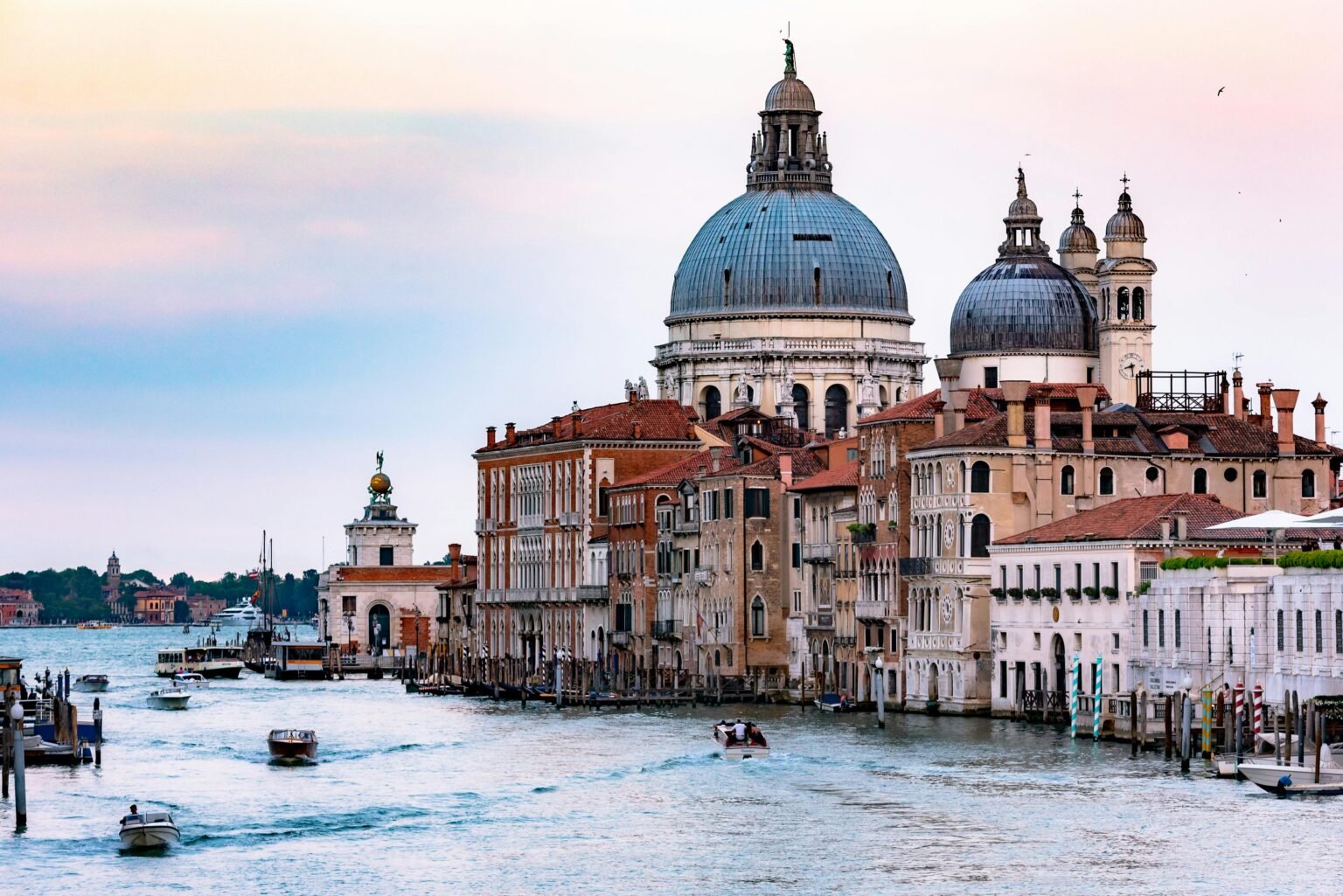Planning a trip to Italy in 2025? Yeah, it can feel like a lot. There are so many amazing places to see, it’s hard to know where to start.
But here’s the good news: Italy isn’t just one kind of beautiful—it’s every kind. Think ancient ruins, Renaissance art, cobblestone streets, and postcard-perfect coastlines. Whether you’re into Roman history, dreamy canals, or pasta with a view, there’s something here with your name on it.
Those who cannot remember the past are condemned to repeat it.
George Santayana
In this guide, I’ll walk you through some of the best places to visit in Italy—iconic landmarks and hidden gems that deserve a spot on your 2025 travel itinerary. From the eternal magic of Rome to the sun-kissed cliffs of the Amalfi Coast, get ready for a journey packed with wonder, stories, and oh yes—gelato. 🍦
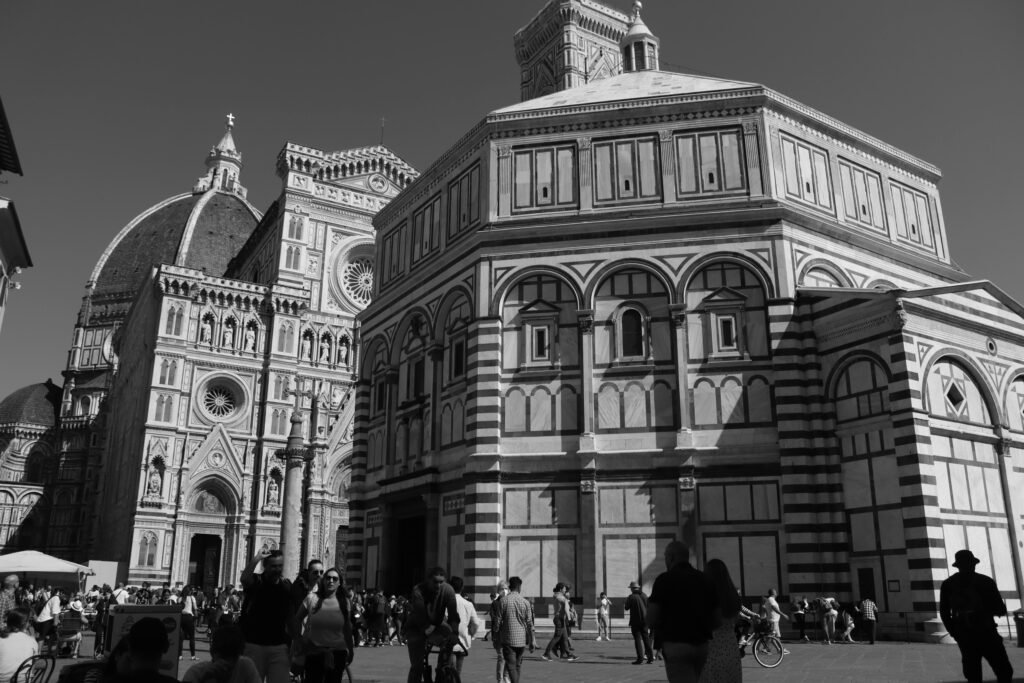
Image: A captivating collage of the Colosseum, Roman Forum ruins, the Florence Duomo, and a Greek temple in Sicily
I. Delving into Ancient Rome
No list of the best places to visit in Italy is complete without Rome—a city where the past isn’t just remembered, it’s alive.
Once the beating heart of the Roman Empire, Rome is now a dreamy mix of ancient ruins, Renaissance glory, and espresso-fueled street life. For history lovers, it’s basically heaven with extra carbs.
1. The Colosseum, Rome: A Testament to Imperial Power
Ah, the Colosseum. You’ve seen it in photos—but nothing compares to standing before it in real life.
Built in the 1st century AD, this massive amphitheater once echoed with the roar of 50,000 spectators watching gladiator fights, public games, and even mock sea battles.
It’s not just stone and arches—it’s raw history you can feel in your bones. As you wander through its underground tunnels and sunlit upper tiers, you’ll catch a glimpse of Rome’s glorious (and gritty) past.
🎯 Must-see for: Fans of ancient architecture, Roman history buffs, or anyone who ever yelled “Are you not entertained?” after watching Gladiator.
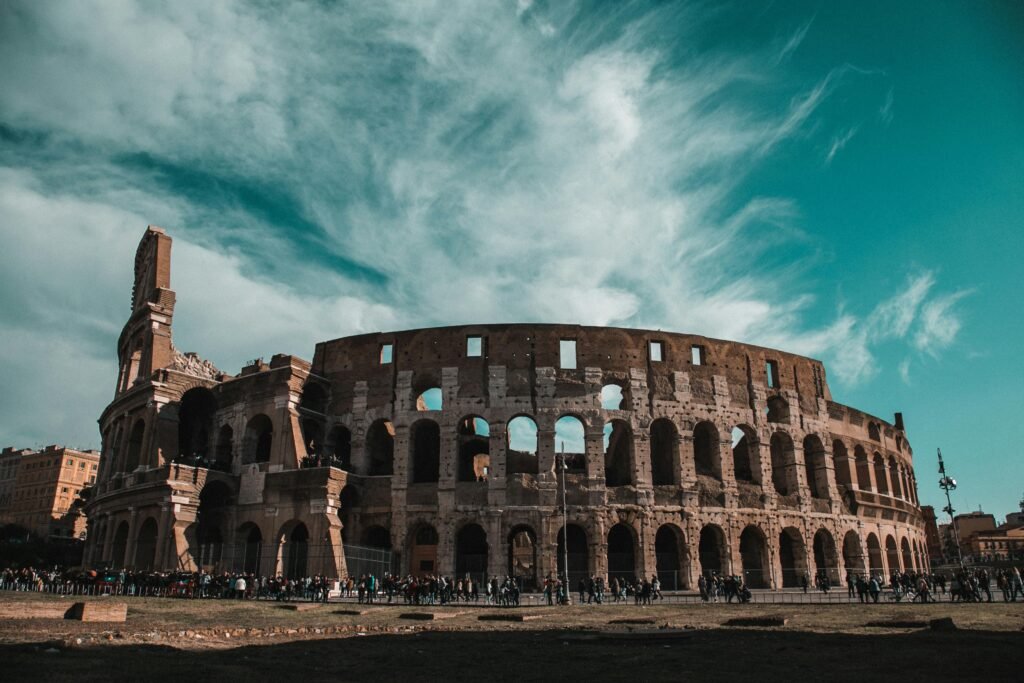
Image: Colosseum
2. The Roman Forum and Palatine Hill, Rome: The Heart of Ancient Life
Just steps from the Colosseum, you’ll find yourself wandering through the Roman Forum—the literal heart of Ancient Rome.
Imagine this: marble columns towering above you, the ruins of temples, basilicas, and meeting halls all around. This was once the buzzing center of Roman life—where deals were made, trials held, gods worshipped, and empires shaped. And just a short climb up?
Welcome to Palatine Hill—one of the seven hills of Rome and possibly its most legendary. According to myth, this is where Romulus founded the city (and where emperors later built their palaces). From up here, the views stretch across the Forum and beyond—it’s the kind of panorama that makes you whisper “wow” without realizing it.
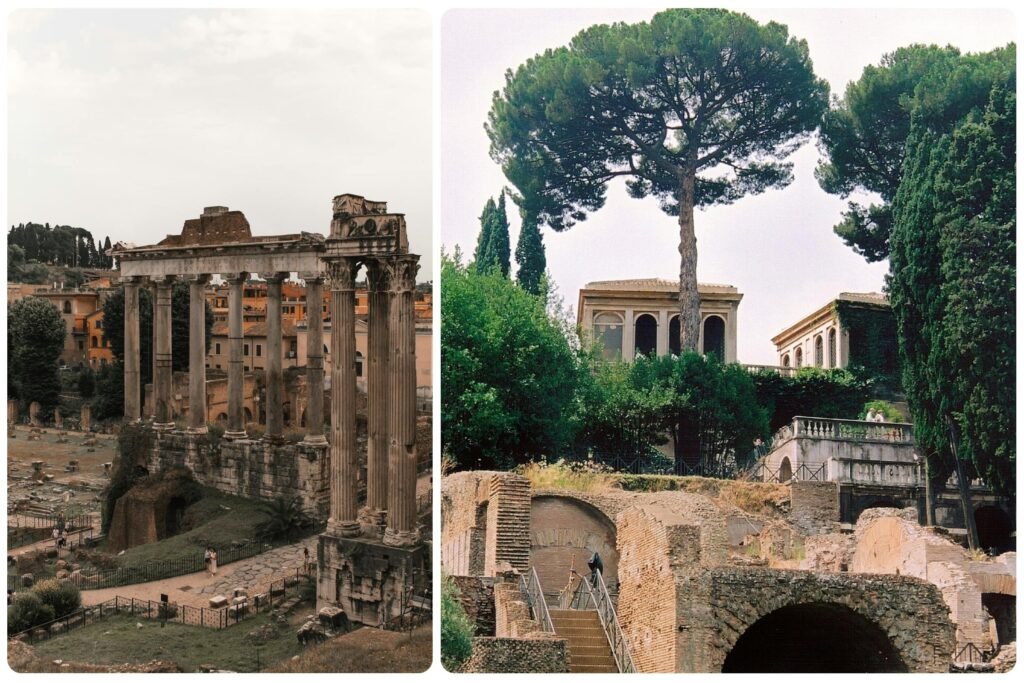
Image: The Roman Forum and Palatine Hill
📌 Why These Spots Matter
- 📍 The Roman Forum: Think of it as Ancient Rome’s downtown—crowded, chaotic, important.
- 🏛 Palatine Hill: Where myth, power, and history meet. Also a great spot for panoramic pics.
Together, they give you a deep dive into Roman civilization—from its mythical beginnings to its imperial height. If you’re into historical sites in Rome, this duo is non-negotiable.
💡 GOHUB Pro Tip
- 🎟 Get the combo ticket that includes the Colosseum, Roman Forum, and Palatine Hill—it’s one pass, three epic spots.
- 🕰️ Block at least 3–4 hours—you’ll want time to wander, take photos, and just soak in the history.
- 👟 Wear comfy shoes. Seriously. Ancient Rome = uneven stones galore.
3. The Pantheon, Rome: An Architectural Marvel
Tucked in the heart of Rome, the Pantheon is one of those places that makes you stop and whisper, “Wow.”
Built in the 2nd century AD, this former temple to all Roman gods is still standing strong—and still in use. Today, it functions as a church, blending ancient Roman grandeur with quiet, sacred beauty.
What makes it truly unforgettable? That dome.
It’s massive. Perfectly round. And at the center, the oculus—a wide, open circle in the ceiling—lets in natural light (and sometimes a bit of rain). The result? A space that feels both grounded and otherworldly.
Step inside, and you’re standing in one of the best-preserved structures from Ancient Rome. Even better? Raphael, the legendary Renaissance artist, is buried here.

Image: Pantheon in Rome
📌 Why You Shouldn’t Miss It
- 🕊 A peaceful, living monument that still hums with history
- 🏛 A masterpiece of Roman engineering and Renaissance elegance
- 🌞 The natural light from the oculus is photo-worthy at any time of day
II. The Spiritual and Artistic Power of Vatican City
After soaking up the architectural brilliance of the Pantheon, it’s time to step into a place where art, faith, and history converge on a breathtaking scale—Vatican City.
Though it’s the smallest country in the world, Vatican City holds some of the most important historical sites in Italy. It’s not just a must-visit for religious pilgrims, but for anyone chasing beauty, meaning, and a deep sense of wonder.
4. Vatican Museums and St. Peter’s Basilica: Renaissance and Baroque Masterpieces
Tucked inside Rome, Vatican City may be the world’s smallest country—but when it comes to history, art, and soul-stirring beauty, it’s absolutely massive.
This is the spiritual heart of Catholicism, the official home of the Pope, and a place where Renaissance and Baroque masterpieces come to life in every hallway and dome. Whether you’re religious or not, the sense of awe here is undeniable.

Image: Vatican Museums
Vatican Museums & St. Peter’s Basilica
Let’s start with the Vatican Museums—a treasure trove of ancient sculptures, tapestries, and paintings that winds through gallery after gallery of jaw-dropping beauty.
The grand finale? The Sistine Chapel. You’ll literally look up and see Michelangelo’s ceiling, one of the most famous works of art in human history. Yes, your neck might hurt from staring up—but trust us, it’s worth every second.
Just a short walk away is St. Peter’s Basilica—an icon of Renaissance architecture and the soul of the Catholic Church. Inside, you’ll find Michelangelo’s Pietà, soaring domes, and golden light filtering through centuries-old stained glass.
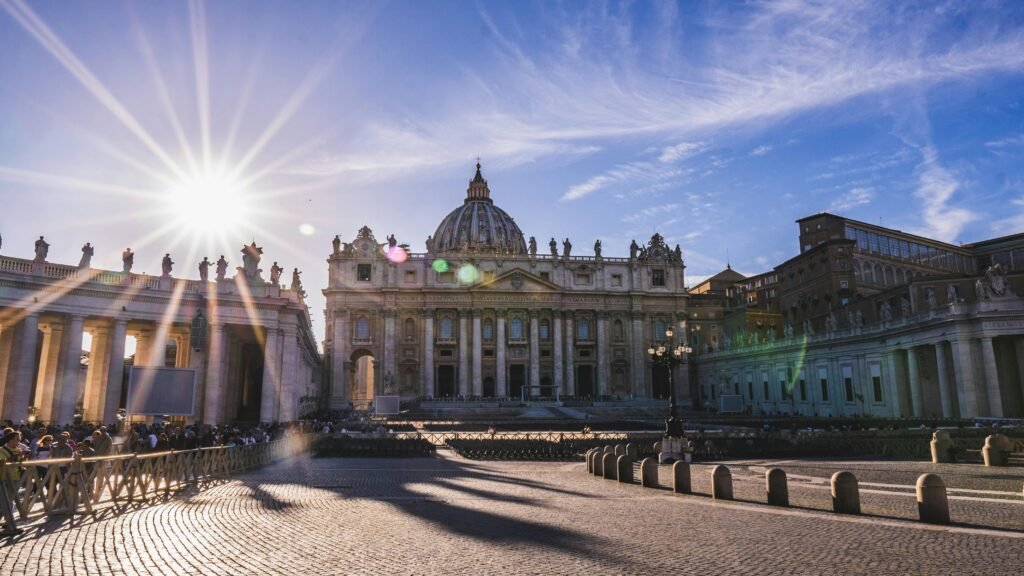
Image: Exerior of St. Peter’s Basilica in Vatican City.
📌 Why It’s Worth Your Time
- 🎨 A front-row seat to Renaissance genius and sacred history
- ⛪ One of the most important religious landmarks in the world
- 🤯 A truly unforgettable experience, whether you’re into art, faith, or just jaw-dropping sights
💡 GOHUB Travel Tip
🎟️ Book your Vatican Museums ticket in advance—slots fill up fast, especially in peak seasons.
📱 Consider getting a guided audio tour so you don’t miss the rich stories behind the art.
🙏 Dress respectfully—shoulders and knees should be covered to enter the Basilica.
Can’t get enough of Europe’s flavors? After Italy, take your tastebuds on a tour through France with these best local foods to try in France — from buttery croissants to rich coq au vin.
III. The Preserved History of Pompeii and Herculaneum
Leaving the grandeur of Vatican City behind, let’s head south—where history wasn’t built over time, but buried in an instant. Just a short trip from Naples lie two of the most haunting and awe-inspiring historical places in Italy: Pompeii and Herculaneum.
In 79 AD, Mount Vesuvius erupted with terrifying force, instantly freezing these Roman towns in time. Today, what remains is a deeply moving window into ancient life—frescoes still vibrant, loaves of bread still in ovens, footsteps still in the dust.
5. Pompeii: A Glimpse into Daily Roman Life
There’s something incredibly personal about Pompeii.
Walking through its streets, you don’t just see ruins—you feel the life that once filled them. Homes, bathhouses, bakeries, temples… all preserved in volcanic ash like a moment frozen mid-breath.
Even the casts of people—caught as they tried to flee—remind us that history isn’t just architecture. It’s human.
You’ll spot colorful mosaics on the floors, intricate wall frescoes, and bits of graffiti that still speak across centuries. If you’ve ever wondered what life really looked like in the Roman world, this is the closest you’ll ever get.

Image: Ancient Roman ruins in Pompeii
📌 Why It Belongs on Your Italy Itinerary
- 🧱 One of the best-preserved archaeological sites in the world
- 🏺 A raw, emotional, and educational experience in equal measure
- 🌄 A powerful contrast to Rome’s grandeur—here, history feels intimate and real
💡 GOHUB Smart Travel Tip
🚆 Take the Circumvesuviana train from Naples—Pompeii has its own stop.
🎟️ Consider a guided tour for deeper context (or grab an audio guide at the entrance).
⏰ Go early or late in the day to avoid the crowds and heat—shade is rare!
6. Herculaneum: The Wealthier Neighbor
If Pompeii shows you the hustle of Roman life, Herculaneum gives you a peek into its luxury.
Smaller and far less crowded, this ancient seaside town was once home to wealthy Roman families. When Mount Vesuvius erupted, a pyroclastic surge buried it so quickly that wooden beams, upper floors, even food and furniture were preserved in stunning detail.
As you wander through marble courtyards, mosaicked bathhouses, and elegant villas, it’s easy to imagine what life looked like for Rome’s upper class. In many ways, Herculaneum feels like a still frame—quiet, intimate, and hauntingly beautiful.

Image: Well-preserved ruins of Herculaneum
📌 Why It’s Worth a Detour
- 🏺 Exceptionally well-preserved—including upper floors and wood structures
- 🧘♀️ Fewer tourists = quieter, more personal experience
- 🏛️ A deep dive into ancient Roman architecture and daily sophistication
💡 GOHUB Off-the-Beaten-Path Tip
🚉 Take the Circumvesuviana train—same line as Pompeii, stop at Ercolano Scavi
📷 Don’t rush—bring your camera, especially for the intricate frescoes and intact rooms
🌿 Pair it with a visit to the nearby Villa of the Papyri, rumored to hold a still-unread library!
IV. The Artistic Heart of Florence and the Renaissance
When it comes to the best places to visit in Italy for history lovers, Florence isn’t just a destination—it’s a revelation.
This is the birthplace of the Renaissance, where streets feel like open-air galleries and every building has a story. The city’s soul is steeped in art, passion, and a level of craftsmanship that quite literally changed the world.
7. Uffizi Gallery: A Treasure Trove of Renaissance Art
Step into the Uffizi Gallery, and you’re walking through the greatest hits of Renaissance art.
Housed in a 16th-century palace along the Arno River, this legendary museum is home to works by Leonardo da Vinci, Botticelli, Michelangelo, and more. From The Birth of Venus to Annunciation, every room is a masterclass in human creativity.
It’s not just a museum—it’s a time machine into an era when Florence led the world in beauty, science, and imagination. If you’re into Florence historical landmarks, this one should be at the very top of your list.
🎧 Bonus: Many rooms now offer audio experiences that bring each painting to life, adding depth and storytelling to every brushstroke.

Image: Uffizi Gallery
📌 Why It’s Unmissable
- 🖼 One of the oldest and most iconic art museums in the world
- 🎨 A chance to stand face-to-face with true masterpieces
- 🏛️ A perfect stop for anyone curious about the Renaissance’s roots
💡 GOHUB Art Lover’s Tip
- 🎟️ Book tickets online well in advance, especially during peak season—lines can be hours long.
- 📚 Research must-see pieces beforehand so you don’t miss your favorites (some are tucked in smaller rooms).
- 🕰️ Try to visit early morning or late afternoon for a quieter experience—more time to linger, less shoulder-to-shoulder traffic.
8. Florence Cathedral (Duomo): An Architectural Marvel with Panoramic Views
You can’t walk through Florence without your eyes drifting upward—because the Duomo dominates the skyline in the most jaw-dropping way.
Officially known as the Florence Cathedral, this masterpiece of Gothic and Renaissance architecture features Brunelleschi’s iconic dome, one of the greatest engineering feats of its time. Even centuries later, it’s still one of the most awe-inspiring historical landmarks in Italy.
Step inside to admire the vast nave and intricate frescoes. But if you’re up for a bit of adventure? Climb to the top of the dome—463 steps, no elevator, and 360 degrees of pure Tuscan magic. You’ll be rewarded with breathtaking panoramic views of Florence that stretch all the way to the rolling hills beyond.
The cathedral complex also includes Giotto’s Campanile and the Baptistery of St. John, both part of the same UNESCO World Heritage Site and just as worth a wander.
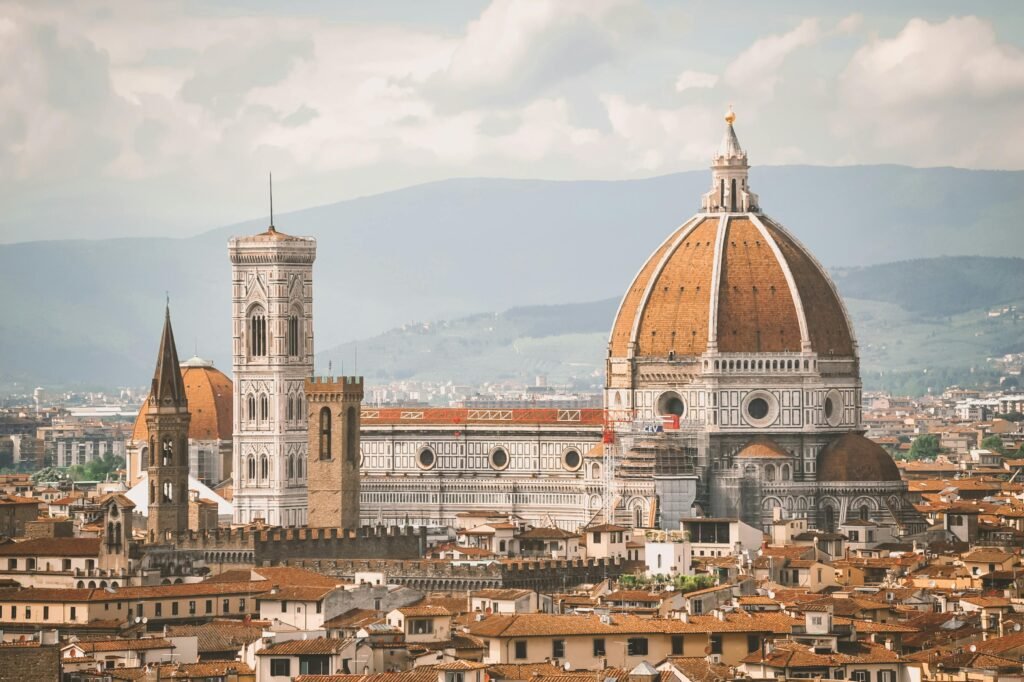
Image: Aerial view of Florence Cathedral
📌 Why It’s a Must-See
- 🏛 One of Italy’s most iconic cathedrals, rich in history and artistry
- 🧱 Home to Brunelleschi’s dome—a true Renaissance engineering marvel
- 🌄 Panoramic rooftop views that are 100% postcard-worthy
💡 GOHUB Adventurous Traveler Tip
- 🥾 The climb is no joke—over 450 steps, narrow stairwells, and no shortcuts. Wear comfy shoes and pack light.
- 🎟️ Book your dome climb tickets online in advance—they sell out fast, especially in high season.
- 📸 Take a breather at the top (and your best selfie of the trip)—the view is absolutely unforgettable.
9. Ponte Vecchio: A Bridge Through Time
Florence has no shortage of masterpieces—but Ponte Vecchio is a different kind of icon.
This medieval bridge over the Arno River is more than just a crossing—it’s a living piece of history. Lined with tiny jewelry shops (just like in the old days), it feels like stepping into a Renaissance painting. The cobbled walkway, golden window displays, and soft glows at sunset? Chef’s kiss.
Built in the 14th century, it’s one of the few bridges in the world with buildings on top—and it’s been standing strong through floods, wars, and the test of time. Whether you’re after a unique souvenir or just a golden hour stroll, this is a Florence must-do.
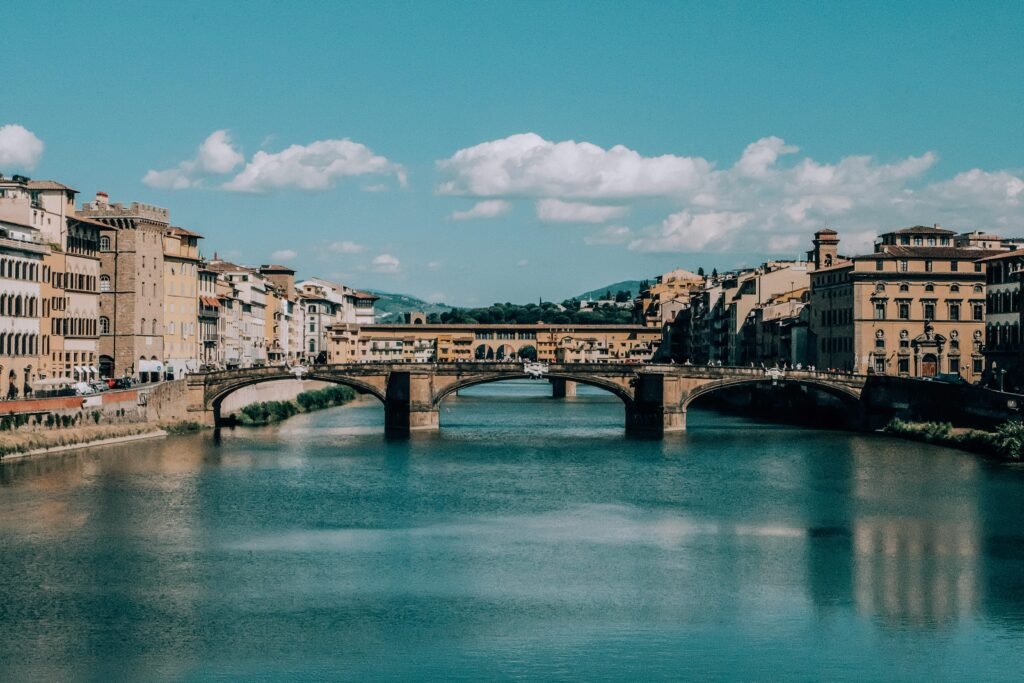
Image: Ponte Vecchio
📌 Why It Belongs on Every Florence Itinerary
- 🌉 A rare example of medieval Italian architecture still fully in use
- 💍 Home to historic goldsmiths and jewelers (window-shopping heaven!)
- 📸 One of the most photographed spots in Florence, especially at sunset
💡 GOHUB Budget-Friendly Tip
- 🚶♀️ It’s completely free to explore—no ticket needed, just comfy shoes and curiosity
- 📷 Come by sunset for glowing views of the Arno and picture-perfect lighting
- 💡 Want a quiet moment? Visit early morning before the crowds roll in
V. Exploring Ancient Greece in Southern Italy
Italy isn’t just Roman ruins and Renaissance palaces—head south and you’ll walk straight into ancient Greece.
In regions once known as Magna Graecia, Greek settlers left behind temples, theaters, and cities that still whisper stories across the centuries. And nowhere is this more breathtaking than in Sicily.
10. Valley of the Temples, Sicily (Agrigento): Echoes of Magna Graecia
🇬🇷 Valley of the Temples, Agrigento: Echoes of Magna Graecia
Set against rolling hills and golden sunsets, the Valley of the Temples in Agrigento is like stepping onto a movie set—only it’s very real and 2,500 years old.
This UNESCO World Heritage Site features the ruins of seven ancient Greek temples, some so well-preserved, they still stand tall with their Doric columns reaching toward the Sicilian sky. Built in the 5th century BC, these sacred spaces tell the story of Sicily’s Greek past, when this island was one of the most important cultural hubs in the Mediterranean.
From the Temple of Concordia to the Temple of Juno, each site reveals a piece of ancient life, belief, and architectural brilliance. It’s one of the most unique historical sites in Italy—and a must for anyone tracing the footsteps of ancient civilizations.
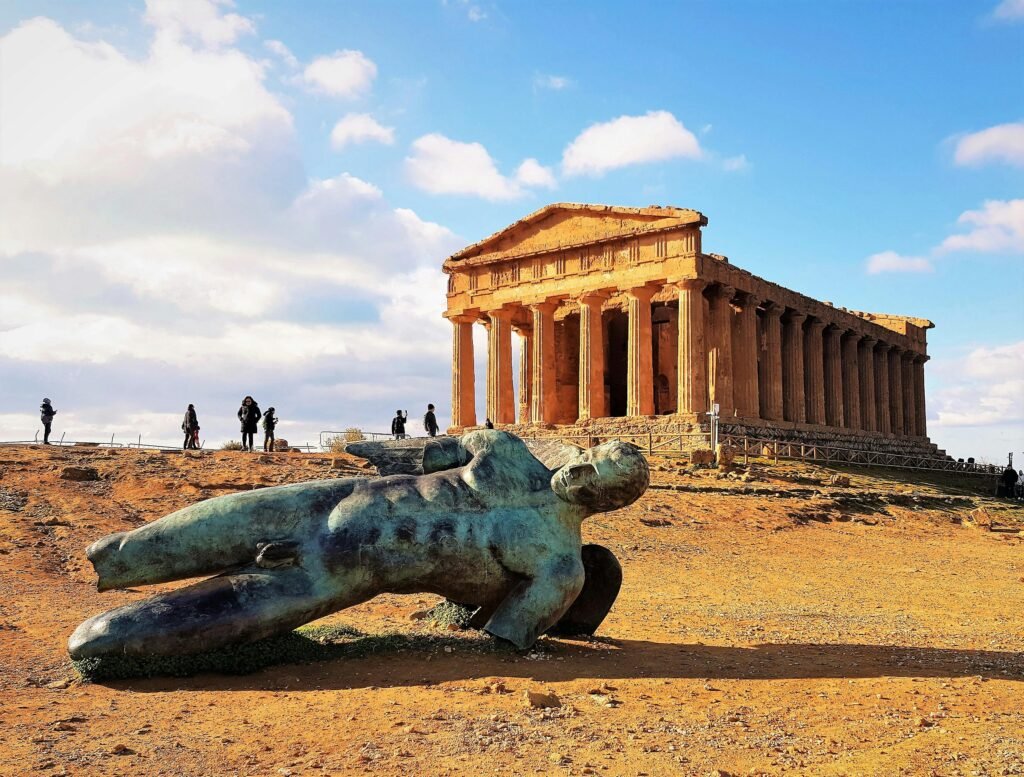
Image: Valley of the Temples
📌 Why It’s a Must for History Lovers
- 🇬🇷 A rare glimpse into Greek influence on Italian soil
- 🏛 Home to some of the best-preserved Greek temples outside of Greece
- 🌅 A magical experience at sunset—ruins glowing gold in the Sicilian light
💡 GOHUB Island Hopper Tip
- ✈️ Fly into Palermo or Catania, then rent a car to reach Agrigento—it’s a scenic drive worth every minute.
- 🎭 While in Sicily, don’t miss the Greek Theatre in Taormina—perched above the sea with epic views of Mt. Etna.
- 📚 Combine sites into a mini Magna Graecia itinerary for a deeper dive into ancient Mediterranean culture.
11. Paestum (Near Amalfi Coast): Well-Preserved Greek Grandeur
Just when you thought the Amalfi Coast was all beaches and limoncello—surprise! It’s also home to some of the oldest and best-preserved Greek temples in the world.
Paestum, a UNESCO World Heritage Site, dates back to around 600 BC. The site includes three towering Doric temples, still standing with quiet strength in the sun-soaked fields of southern Campania. Once a Greek colony named Poseidonia, it later became part of the Roman world—so the layers of history here are deep and fascinating.
Unlike more touristy ruins, Paestum feels peaceful, even a little mystical. You can wander through the open-air temples, stroll past ancient city walls, and even explore a small museum showcasing incredible frescoes and artifacts.
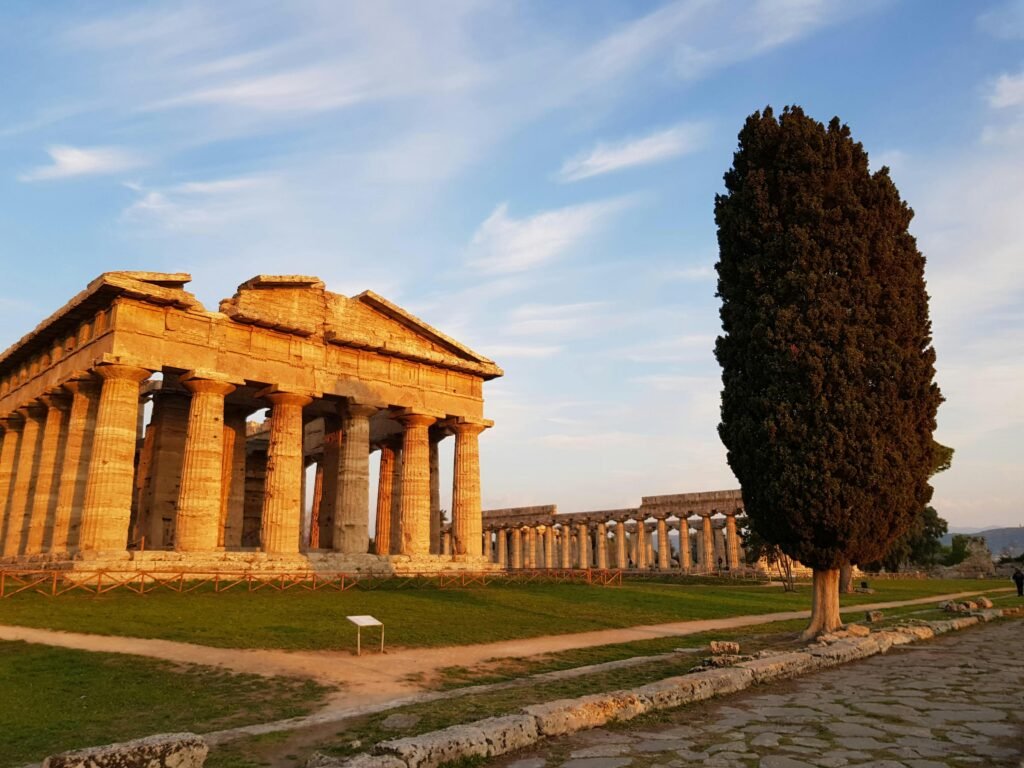
Image: Paestum – ancient Greek temples
📌 Why It Deserves a Spot on Your Itinerary
- 🏛 Features some of the best-preserved Greek temples in Italy
- 🧭 A hidden gem off the main tourist path—quiet, spacious, and serene
- 📸 Perfect mix of history and scenic beauty, just a stone’s throw from the Amalfi Coast
💡 GOHUB Coastal Explorer Tip
- 🚌 Easily done as a day trip from the Amalfi Coast—train or car from Salerno is your best bet
- 📷 Pack your camera: early morning and golden hour are chef’s kiss for temple shots
- 🌊 Combine your visit with a dip in the sea or a walk through nearby coastal villages
VI. Uncovering Medieval History
Beyond ancient ruins and Renaissance masterpieces, Italy’s medieval past left behind castles, cathedrals, and quirky landmarks—including one of the most iconic tilts in the world.
12. Leaning Tower of Pisa, Pisa: An Architectural Anomaly
Let’s be honest—the Leaning Tower of Pisa wasn’t supposed to lean. Construction began in the 12th century, but thanks to a soft, unstable foundation, the tower began to tilt before it was even finished. Instead of fixing it, the builders just… kept going. The result? One of the most recognizable landmarks in the world, and a true icon of medieval Italian architecture. Located in the heart of the Piazza dei Miracoli, this UNESCO World Heritage Site is part of the Pisa Cathedral complex, alongside the Cathedral and Baptistery—both of which are absolutely worth a visit.
Climbing the tower is a weirdly delightful experience. The steps curve, the floor tilts beneath you, and the view from the top? Worth every wobbly step.
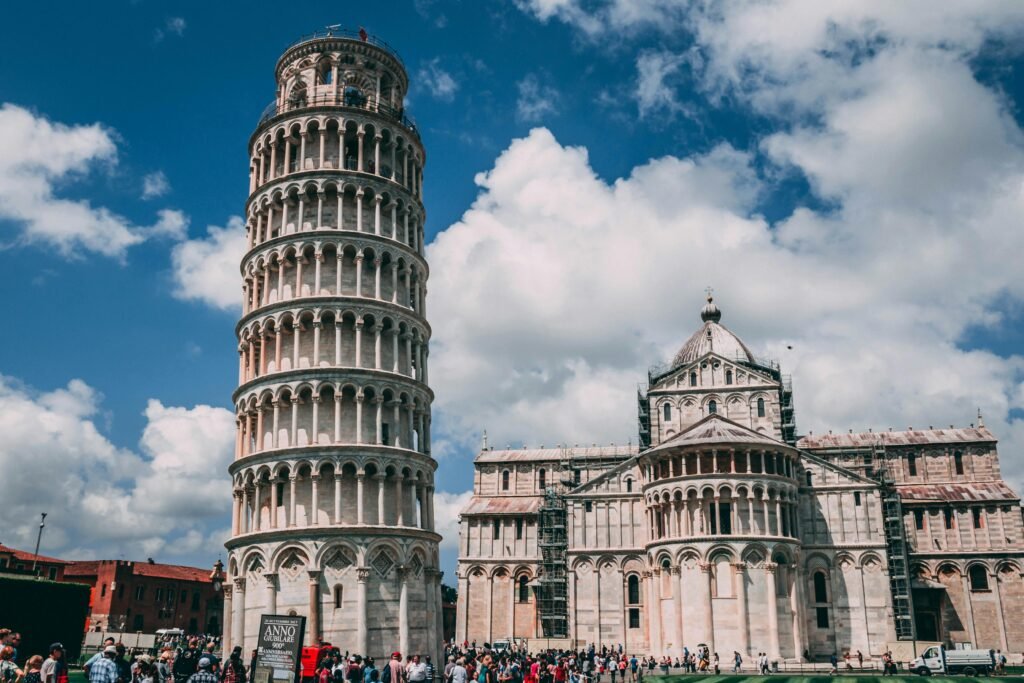
Image: Leaning Tower of Pisa
📌 Why It’s Worth the Stop
- 🌀 A one-of-a-kind example of medieval architecture gone (adorably) wrong
- 🏛 Part of a larger cathedral complex that’s beautiful and historically rich
- 📸 The mandatory tourist photo spot—yes, you’ll want to “hold it up” with your hands
💡 GOHUB Unique Experience Tip
- 🎟️ Book your climb in advance—entry is timed and limited throughout the day
- 👟 Wear sturdy shoes—the marble stairs are narrow and slippery in spots
- 📷 Don’t rush! Explore the Cathedral and Baptistery while you’re in the Piazza dei Miracoli—they’re underrated and often quieter than the tower
13. Castel del Monte, Apulia: A Mysterious Octagonal Fortress
High on a lonely hill in Southern Italy, Castel del Monte rises like something out of a Dan Brown novel.
Built in the 13th century by Emperor Frederick II, this fortress is anything but ordinary. Its perfect octagonal design, mathematical precision, and mysterious symbolism have baffled historians and inspired countless theories—from secret societies to astrological alignments.
But even if you’re not into medieval conspiracies, Castel del Monte is a stunning example of medieval military architecture with a twist. It blends classical, Gothic, and Islamic styles into a structure that’s both beautiful and bizarre.
No moat, no defensive walls—just pure geometry and intrigue, sitting quietly under the Apulian sun. It’s a place where history meets mystery, and every angle sparks curiosity.
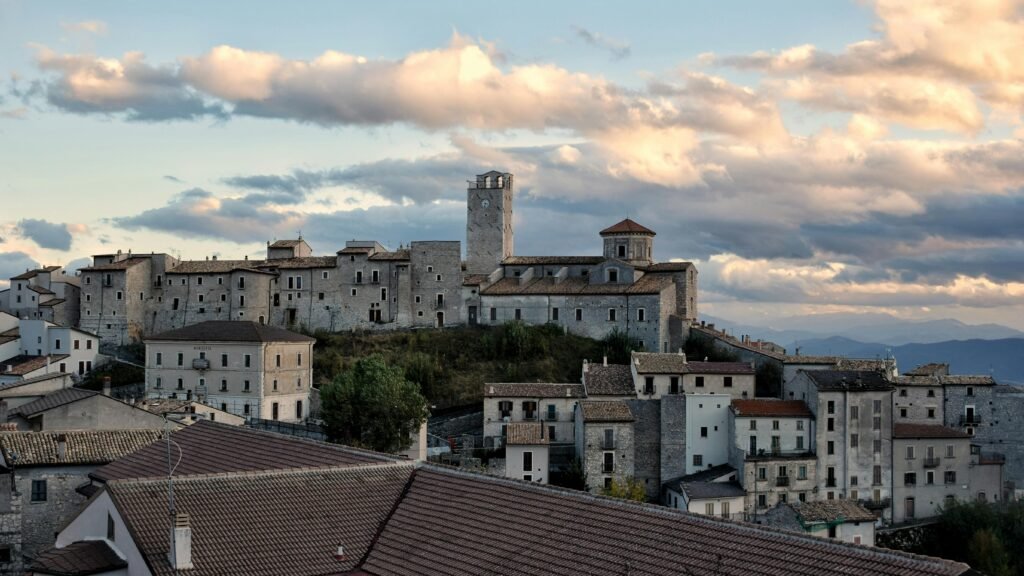
Image: Castel del Monte
📌 Why It’s a Hidden Gem
- 🧱 A rare architectural fusion of multiple medieval influences
- 🧩 Full of historical mystery, symbolism, and unanswered questions
- 🏞️ Stunning panoramic views of the surrounding Puglian countryside
💡 GOHUB Southern Italy Adventure Tip
- 🚗 Rent a car to explore Puglia—Castel del Monte is just the beginning
- 🏡 Add a stop in Alberobello to see the fairytale-like Trulli houses
- 🏖️ Don’t miss the beaches—Adriatic or Ionian, you really can’t go wrong
VII. Discovering Hidden Historical Gems
Sure, Italy’s icons are unforgettable—but the real magic? Sometimes it hides in quiet corners, behind unassuming gates, or beneath the pavement of a busy piazza.
If you love the thrill of finding places where the tour buses haven’t stopped yet, these lesser-known historical treasures will make your trip feel even more personal and unforgettable.
14. Area Sacra di Largo Argentina, Rome
What’s cool about it:
Tucked in the middle of a busy Roman square, this ancient ruin isn’t just a set of old stones—it’s the actual spot where Julius Caesar was assassinated in 44 BC.
The Area Sacra contains the remains of four Roman Republican temples and Pompey’s Theatre, blending archaeological significance with eerie historical drama. (And—plot twist—it’s now also a cat sanctuary. Yes, really 🐾)
Why go:
- One of the most important archaeological sites in Rome outside the big-name attractions
- No ticket lines, no crowds—just pure, open-air history
- Great for travelers who love ancient history with a side of local charm

Image: Botanical Garden in Padua
15. Botanical Garden of Padua (Orto Botanico), Veneto
What’s cool about it:
Founded in 1545, this is the oldest university botanical garden in the world—and it’s still flourishing. Originally used to grow medicinal plants for medical students, it’s now a tranquil UNESCO World Heritage Site full of rare species and quiet walking paths.
It’s living history at its most peaceful—no frescoes, no ruins, just nature, knowledge, and a whole lot of fresh air.
Why go:
- A unique historical site focused on science, not swords
- Perfect for a relaxing escape from crowded cities
- Near Venice and Verona—an easy addition to your Northern Italy itinerary
⚡ More Hidden Gems to Add to Your Map
- 🏰 Abbey of San Galgano, Tuscany – A roofless Gothic abbey with mystical vibes and a sword in the stone (yes, really)
- ⛪ Basilica di San Miniato al Monte, Florence – Incredible views, no crowds, and a peaceful medieval church often skipped for the Duomo
- 🎭 Roman Amphitheater of Lecce, Puglia – A mini-Colosseum tucked into Italy’s sunniest baroque city
💡 GOHUB Explorer Tip
📍 Mark one “hidden gem day” on your itinerary—it’s often the most memorable
🚉 Most of these sites are reachable by regional train or short drive—plan ahead and go early
📱 And of course, stay connected with a local eSIM so you can Google cool facts while you’re exploring secret temples and ancient gardens

Image: Screenshot of the GoHub eSIM webpage, highlighting the destination input field with “Italy” selected, illustrating how users can easily search for eSIM data plans.
👉 Explore GoHub’s Italy eSIM plans now
📶 From Roman ruins to Renaissance cities, explore Italy without worrying about connectivity. Gohub’s Europe eSIM gives you high-speed data across Italy and beyond — no SIM swapping or roaming fees.
VIII. Wrapping Up: The Best Places to Visit in Italy for History Lovers
From ancient Roman ruins to Greek temples in Sicily, and from Renaissance masterpieces in Florence to mystical medieval castles, Italy offers an experience that’s so much more than sightseeing. It’s a full-body time travel adventure.
If you’re passionate about the past, these destinations aren’t just stops on a map—they’re the best places to visit in Italy for history lovers who want to walk where emperors ruled, artists painted, and revolutions sparked.
And while the stories may be centuries old, your trip doesn’t have to feel outdated.
💡 Travel Smart, Stay Connected
Whether you’re navigating ruins in Rome, live-streaming sunsets from the Ponte Vecchio, or checking museum hours on the Amalfi Coast, staying online is key.
👉 With a GOHUB eSIM for Italy, you’ll get:
✅ Instant activation with no physical SIM hassle
✅ Reliable 4G/5G across all major historical sites in Italy
✅ No roaming fees or surprise charges
✅ 24/7 multilingual support (yes, even from Castel del Monte 👀)
So pack your curiosity, lace up those walking shoes, and go uncover the timeless wonders of Italy.
History is waiting—and now you’re ready to live it.


